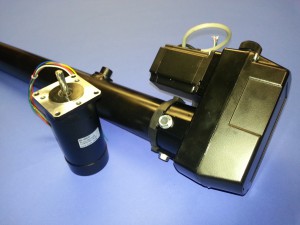Effective motion control actuation is a critical requirement for military applications. Linear actuators for the military industry need to perform under heavy loads for long periods of time. In terms of performance, the actuators should provide fast and efficient responses, smooth and accurate movements, while providing protection against environmental contaminants. They also need to provide flexibility, and should be easily integrated into systems. In this post, we shall look at designing a linear actuator for military applications.
Designing a Military Actuator
The following points include the basic information that one needs to keep in mind when selecting linear actuators for the military industry:
-
Select the Type of Actuator:
The type of actuator will make an immense difference to the application’s success. Generally, manufacturers offer the following actuators for military purposes:
- Electromagnetic Actuators –
These are low voltage devices that provide high stroke and actuation force. They are suitable for compact positioning effect.
- Hydraulic Actuators –
Hydraulic actuators provide large amounts of force. They are primarily used for military vehicles such as tanks, trucks, and bomb loading equipment.
- Electro mechanical Actuators:
These provide precise control in terms of speed and motion. They are a popular choice for applications such as guns, turrets, and ground surveillance systems.
- Electromagnetic Actuators –
-
Select the Technology:
Actuators can be designed with a variety of technologies to meet the application requirements. However, the two primary types are Acme and Ball screw technologies.
- Acme Screw –
These consist of trapezoidal teeth and strong threads. The threads allow for efficient transmission of linear force to the actuator. This efficiency also prevents resistance to external loads.
- Ball Screw –
These comprise ball bearings in between the grooves of the threads to create linear motion. Ball screws can be designed in a variety of leads and diameters, and adjusted in numerous ways.
- Acme Screw –
-
Provide the Specifications:
The success of a linear actuator in an application depends greatly on it meeting the exact requirements. As a customer, you need to provide all the requirements that the engineers will need to design the actuator. This includes the application area, length, height, speed, and width. Environmental factors such as dust, grime, wind, and extreme temperatures should also be taken into consideration.
-
Choose the Manufacturing Materials:
The designers and engineers can suggest the optimum materials that will allow the actuator to provide the necessary level of performance in the application. Carbon or stainless steel can be used for the screw and primary body. Steel and aluminum are generally suggested for line shafting. Nylon and neoprene are options for the boots that protect the actuator tube.
-
Design the Prototype:
To ensure that the actuator will perform efficiently in the final application, it is best to create an initial prototype for basic testing. Generally, designers utilize 3D CAD software to design the prototype. This will allow the engineers to understand the problems, choose an appropriate solution, and eliminate any discrepancy. Once the prototype is approved, the linear actuator is manufactured, tested, and sent for delivery.
Learn more on this topic in our related blog: How & Why Are Actuators Trending in the Military & Defense Industry?
Understanding the basic process of designing linear actuators for the military industry can be extremely useful when looking for improved solutions to different types of military applications.

